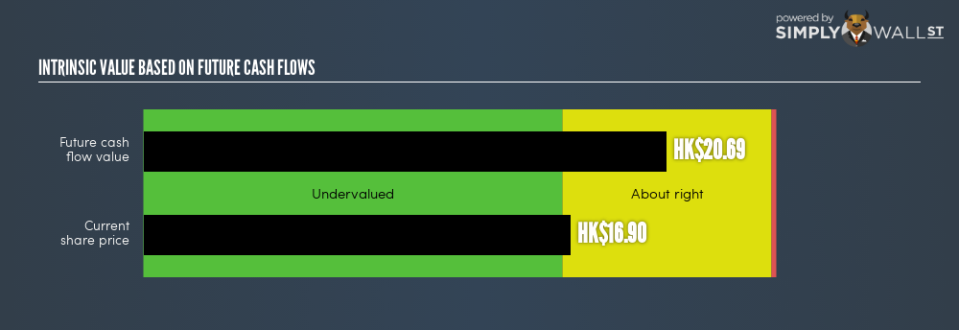Is There An Opportunity With China Life Insurance Company Limited’s (HKG:2628) Mispricing?

One of the most difficult industry to value is insurance, given that they adhere to different rules compared to other companies. For example, insurance firms don’t have gross profits as such, but gross written premiums play a huge part in forecasting cash flows. Looking at factors such as book values, on top of the return and cost of equity, is useful for determining 2628’s value. Below I will show you how to value 2628 in a reasonably effective and easy method.
See our latest analysis for China Life Insurance
What Model Should You Use?
There are two facets to consider: regulation and type of assets. Financial firms operating in China face strict financial regulation. In addition, insurance companies usually do not hold large portions of tangible assets on their balance sheet. As traditional valuation models put weight on inputs such as capex and depreciation, which is less meaningful for finacial firms, the Excess Return model places importance on forecasting stable earnings and book values.
The Calculation
The central belief for Excess Returns is that equity value is how much the firm can earn, over and above its cost of equity, given the level of equity it has in the company at the moment. The returns above the cost of equity is known as excess returns:
Excess Return Per Share = (Stable Return On Equity – Cost Of Equity) (Book Value Of Equity Per Share)
= (13.07% – 10.3%) x CN¥13.44 = CN¥0.37
We use this value to calculate the terminal value of the company, which is how much we expect the company to continue to earn every year, forever. This is a common component of discounted cash flow models:
Terminal Value Per Share = Excess Return Per Share / (Cost of Equity – Expected Growth Rate)
= CN¥0.37 / (10.3% – 2.2%) = CN¥4.6
These factors are combined to calculate the true value of 2628’s stock:
Value Per Share = Book Value of Equity Per Share + Terminal Value Per Share
= CN¥13.44 + CN¥4.6 = CN¥18.04 (HK$20.69)
This results in an intrinsic value in the company’s reported currency of CN¥18.04. However, 2628’s primary listing is in China, and 1 share of 2628 in CNY represents 1.147 ( CNY/ HKD) share of NYSE:LFC, so the intrinsic value per share in HKD is HK$20.69. Relative to today’s price of CN¥16.90, 2628 is trading in-line with its true value. This means 2628 isn’t an attractive buy right now. Valuation is only one side of the coin when you’re looking to invest, or sell, 2628. Analyzing fundamental factors are equally important when it comes to determining if 2628 has a place in your holdings.
Next Steps:
For insurance companies, there are three key aspects you should look at:
Financial health: Does it have a healthy balance sheet? Take a look at our free bank analysis with six simple checks on things like leverage and risk.
Future earnings: What does the market think of 2628 going forward? Our analyst growth expectation chart helps visualize 2628’s growth potential over the upcoming years.
Dividends: Most people buy financial stocks for their healthy and stable dividends. Check out whether 2628 is a dividend Rockstar with our historical and future dividend analysis.
For more details and sources, take a look at our full calculation on 2628 here.
To help readers see past the short term volatility of the financial market, we aim to bring you a long-term focused research analysis purely driven by fundamental data. Note that our analysis does not factor in the latest price-sensitive company announcements.
The author is an independent contributor and at the time of publication had no position in the stocks mentioned. For errors that warrant correction please contact the editor at editorial-team@simplywallst.com.

 Yahoo Finance
Yahoo Finance 
